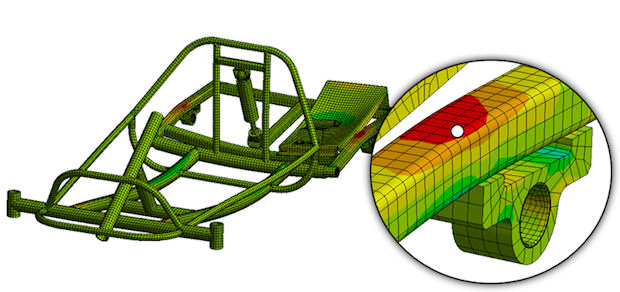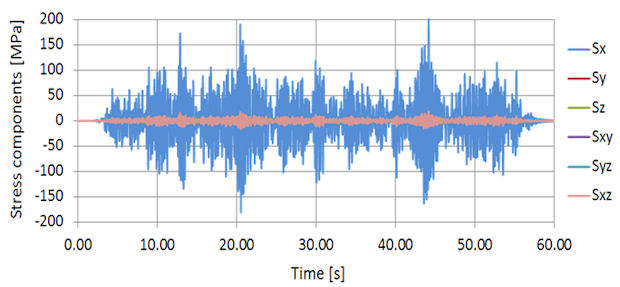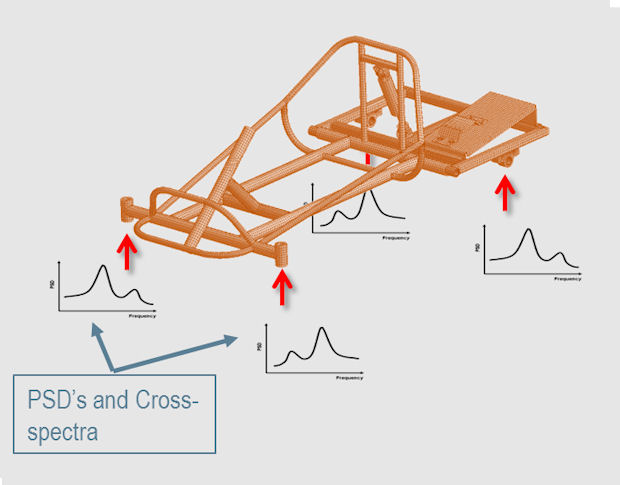Fatigue from PSDs: Background Theory and fe-safe Implementation
Latest News
October 9, 2014
 Dear Desktop Engineering Reader:
Dear Desktop Engineering Reader:
Fatigue analyses are run in industries as diverse as aerospace, medical devices, cellphone design, and nuclear power. Among the toughest nuts to crack in the field is fatigue produced by random forced vibrations. The automotive industry is particularly interested in this phenomenon.
The SIMULIA brand of Dassault Systèmes recently introduced version 6.5 of its fe-safe fatigue and durability analysis software for finite element models. Among the features in this release is an advanced method for studying random vibration fatigue that enables you to perform fatigue analyses entirely in the frequency domain. According to Dassault, fe-safe is the first commercially available application to provide this capability. Today’s Check it Out link takes you to a brief on-demand webinar that provides an in-depth technical overview of what this means for you.
Here’s the scenario. Power spectrum density (PSD) describes how energy in a signal or time series distributes over different frequencies. PSD provides a compact and direct way to represent a random process in a frequency domain approach, which makes it a widely used tactic. However, most commercial fatigue analysis methodologies using PSDs tend to limit their use to shaker table applications. This means that these applications do not fully address out-of-phase loadings from multiple channels.
By incorporating the ability to perform fatigue analysis entirely in the frequency domain, version 6.5 of fe-safe does away with this limitation. “Fatigue from PSDs: Background Theory and fe-safe Implementation” covers the key features of this technology in a fast-paced 30 minutes.
Among the important features of fe-safe 6.5’s implementation of fatigue analysis in the frequency domain is the ability for you to consider multiple input loadings rather than concentrating loadings into a single input channel connected to a master point. This makes it possible for you to study phasing between loading channels as well as scaling and combining them using different factors.
Version 6.5’s random vibration fatigue algorithms are faster than equivalent time domain-based algorithms, according to Dassault. Version 6.5 also offers Von Mises, Normal and Shear critical plane criteria. Innately, fe-safe 6.5 allows for easy probabilistic analysis.
The webinar begins with a brief introduction of fe-safe, its underlying approach to durability and fatigue analysis from FEA (finite element analysis) models. The business rationales for testing for fatigue as well as the safety considerations are addressed. Around the 4:55 minute mark, the presentation turns to the fe-safe application with an explanation of its general capabilities, such as the user interface, analysis options, materials properties database and results, before gradually moving into a peek of the new frequency domain analysis functions.
An important element of the frequency analysis discussion centers on the types of applications that can best benefit from this analysis method. The presenter, an engineer with the Dassault SIMULIA research and development team, poses a series of questions to help you identify if this is the right approach for you. For example, how linear is your structure? If it’s not entirely linear, how can you assume it to be linear for your regions of interest? Can you disregard transient effects safely or not?
The presentation then turns to the software’s methodology for executing frequency domain analyses. The discussions are theoretical and explanatory rather than a demonstration per se, although fe-safe’s capabilities are frequently displayed. Discussions are backed with numerous screen shots, graphs, flowcharts and animations. Topics covered include the pros and cons of fatigue analysis in the frequency domain, new considerations you encounter with a new approach, cross spectral data, signal processing, assembling a dynamic response matrix and shear stresses on selected panes.
“Fatigue from PSDs: Background Theory and fe-safe Implementation” assumes a familiarity with fatigue and durability analysis issues, but it should be accessible to engineers comfortable with FEA. It is a thorough, engineer-to-engineer presentation that should not be missed if safety and durability in life and mission critical applications are among your design imperatives. Hit today’s Check it Out link to watch.
Thanks, Pal. – Lockwood
Anthony J. Lockwood
Editor at Large, Desktop Engineering
Watch “Fatigue from PSDs: Background Theory and fe-safe Implementation.”
Subscribe to our FREE magazine, FREE email newsletters or both!
Latest News
About the Author
Anthony J. Lockwood is Digital Engineering’s founding editor. He is now retired. Contact him via de-editors@digitaleng.news.
Follow DE








